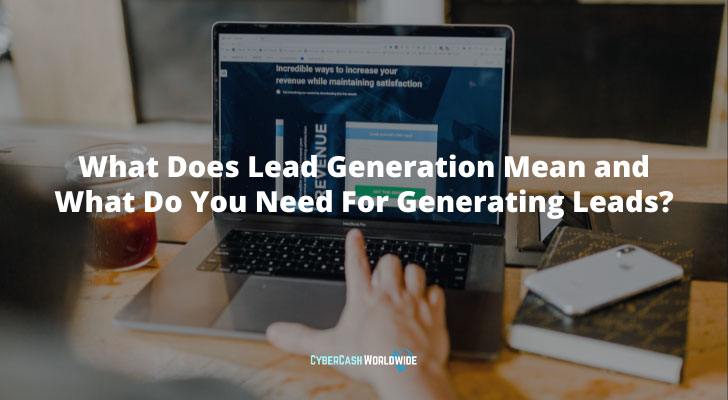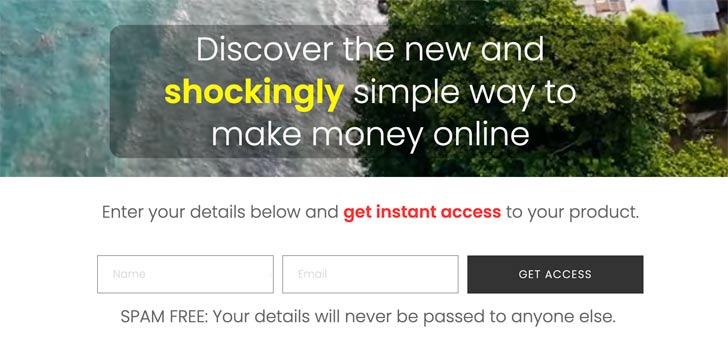In business, lead generation is the initiation of consumer interest or inquiry into the products of a business. The purpose of creating leads can be anything from list building to acquiring e-mail lists to initiating sales campaigns. The process of generating leads typically involves collecting and storing customer information, such as name, email address, phone number, etc.
In order to generate leads, businesses need to create compelling offers that will interest potential customers and get them to provide their contact information. Once a lead is generated, it is then passed on to a sales team where it will be further developed and hopefully converted into a sale. So, what exactly do you need to generate leads? Keep reading to find out!

What is Lead Generation?
The process of attracting and converting users into prospects of your business is known as lead generation. The goal of lead generation is to turn anyone who is interested in your niche market into acquiring prospects (i.e. qualified leads), which are people who have the potential to become paying customers.
The first step in lead generation is creating awareness about your product/service. This can be done through various marketing channels such as content marketing, social media marketing, search engine optimization, and paid advertising. Once you have created awareness about your brand, you need to generate interest in what you are selling. This can be done by providing valuable content that educates your target audience about your product or service and its benefits.

Lead Generation Page Example
Once you have generated interest in what you are selling, you need to get people to take action or convert. This is where lead capture comes in. Lead capture is the process of getting contact information from potential customers so that you can follow up with them later. There are a number of ways to do this, such as using forms on your website, running contests or giveaways, or offering free trials.
Once you have captured leads, it’s important to nurture them so that they eventually convert into paying customers. Nurturing involves building relationships with potential customers and providing them with valuable content that helps them make a buying decision. The goal of nurturing is to eventually turn a stranger into a paying customer or qualified lead.
What Are the Benefits of Lead Generation?
Here are the main reasons you should generate leads;
1. Increased Sales:
By generating more leads, you have more opportunities to convert them into paying customers. It is very rare that users visit your website for the first time and make a purchase on the spot. They may be interested in your products but may not have the money (or credit card) handy, in which case they'll leave your site and may never return. But it's easy for them to sign up with your newsletter. You can promote your products by sending follow-up emails over and over again to remind them of your business and the products you promote.
2. Improved Brand Recognition and Awareness:

Another benefit of lead generation is that it can help improve your brand recognition and awareness. When you generate leads, you are getting your name and your brand in front of potential customers who may not be familiar with you otherwise. This exposure can help increase brand awareness and recognition, which can ultimately lead to more sales.
3. Greater Efficiency:
Lead generation can also make your marketing efforts more efficient. Rather than blindly trying to reach as many people as possible with your marketing messages, you can focus your efforts on those who are actually interested in what you have to offer. This targeted approach can save you time and money while helping you get better results from your marketing campaigns.
What Do You Need To Have To Generate Leads?
In order to generate leads, you will need to have a system in place that can capture potential customers' information. This can be done through online forms, landing pages, or using a landing page creator software.
Once you have collected this information, you will need to follow up with the lead in order to turn them into paying customers. This process can be automated with marketing automation software or it can be done manually.
Create as many sophisticated lead generation using Thrive Architect
What Do You Advocate?
How To Generate Leads
There are a number of ways to generate leads. The most common way is through online marketing channels, such as search engine optimization (SEO), pay-per-click (PPC) advertising, content marketing, or social media marketing.
Another way to generate leads is through offline channels, such as print advertising, direct mail, or trade shows and events.
The best way to generate leads is to use a combination of both online and offline channels. This will give you the widest reach and the best chance of converting prospects into leads.
Here are some tips for generating leads:
- Define your target audience. This will help you identify the best marketing channels to reach them.
- Create compelling content. Whether it's a blog post, white paper, or e-book, make sure your content is interesting and informative.
- Use call-to-actions (CTAs). Make it easy for prospects to contact you by using CTAs throughout your website and in your email signature line.
- Nurture your leads. Once you have generated a lead, don't forget to follow up and nurture them until they're ready to buy.
What Does Lead Generation Mean and What Do You Need For Generating Leads? Conclusion
In conclusion, lead generation is the process of attracting and converting strangers into prospects and customers. By creating attractive offers and building relationships with potential customers, businesses can generate leads that turn into sales. To be effective at lead generation, businesses need to have a solid understanding of their target market, create attractive offers, and build relationships with potential customers.
For $299/year or $149/quarter
Thrive Suite Includes:
